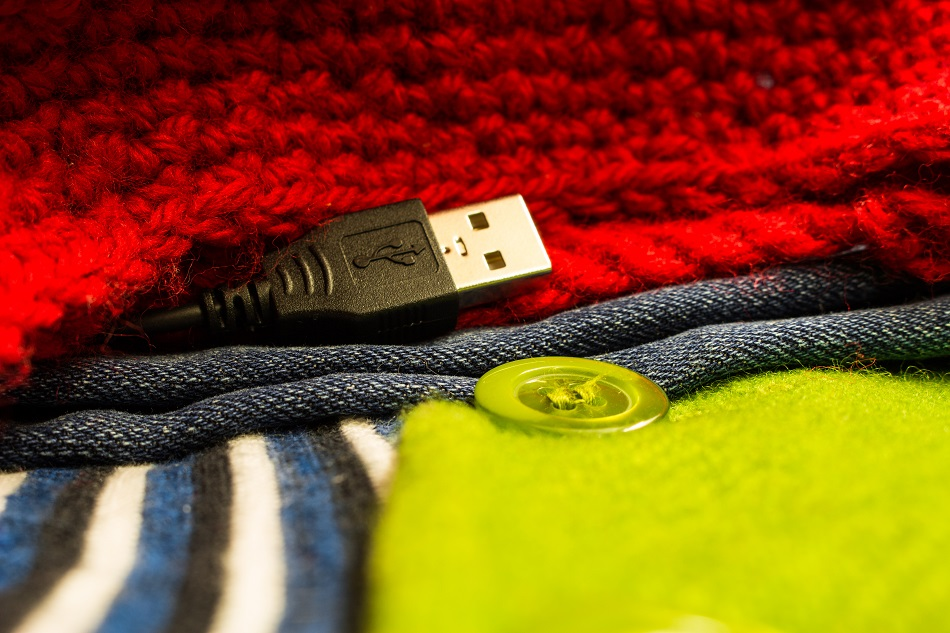By Kalwinder KaurNov 20 2012
 Image Credit: Photos by D/Shutterstock.com
Image Credit: Photos by D/Shutterstock.com
Clothing products produced with smart or intelligent textiles are known as smart clothes. Fashion accessories and garments are also sometimes referred to as smart clothing.
Smart textiles are further divided into three types such as:
- Active smart textiles
- Passive smart textiles
- Advanced smart textiles
Active smart textiles have an ability to sense particular stimuli and react differently as per the stimuli. Passive smart textiles have the capacity to sense environmental stimuli. Advanced smart textiles also sense and react according to the stimuli, and can be adjusted according to the environmental conditions.
Environmental contexts and the requirements of users are sensed by the smart clothes and they take action to satisfy the requirements. A wide range of innovative products are possible thanks to wearable computers and smart clothes.
Wearable Electronics – Requirements
Smart clothing is generally used in a mobile environment which is challenging. In doing so, the design of the electronic components to the clothing is also considered. In a mobile environment, the electronics should be protected from the constantly changing humidity and temperature conditions. Moreover, since this technology is used on humans, extra caution should be taken to ensure the safety of the human.
The ability to wash electronics is a requirement too since these are integrated into clothes. Yet, this requirement does not seem to be very practical as of now. Another major requirement for wearable electronics is modularity as the same hardware and software may be targeted for different service user groups.
The usability of wearable electronics is associated with users, the environment, as well as the tools and tasks of the users themselves. The following five attributes define the term usability:
- Learnability
- Memorability
- Effective use
- Subjective satisfaction
- Error handling
The fulfillment of requirements by a smart clothes system is examined by the so-called usability test. This quality test can also verify if the system is applicable for a specific purpose. It can be conducted with the help of questionnaires, observations, and interviews. A usability assessment can be done at different stages of product testing and will also need to assess if the wearable electronic system can be used in any environment at all times.
This usability evaluation helps developers to compare different designs, to analyze the feedback on the specific requirements, to verify the design’s overall value, to find answers to problems that are highlighted by the evaluation process, and to satisfy the standard requirements.
Wearable Electronics – Architecture
By definition, a smart clothing system should consist of the following components:
- Actuators and sensors – they form a key part of the control loop
- Energy providers – to power its functions
- Data storage and processing – for the implementation of functionality and intelligence
- Communication – is necessary among the system, its different components, users, and others
The following video presents a discussion by Professor Lucy Dunne at the University of Minnesota on the latest developments in smart clothing.
Smart Clothes
The system has the capacity to control the automated functions and provide feedback to the user, based on inputs received from the sensors and the user himself. Hardware components of the electronic clothing system are chosen based on the environment and application.
The major components of the electronic architecture of the wearable electronics system are given below:
- CPU – situated at the center, to link to different kinds of electronic modules present in the system
- Microcontrollers – usually 8 to 16 bit
- Visual feedback devices – HMDs and panel displays
- Personal communication devices – Bluetooth and IrDA
- Positioning devices – GPS
- Sensors – to monitor physiological signals
- User input devices – keyboard, mouse, eye tracking, speech recognition
- Energy sources – batteries and solar cells
- Audio devices – headphones, microphones, headsets, etc
- External communication devices – GPRS, WLAN, GSM, etc.
Sources and Further Reading
- Ariyatum.B, Holland.R, Harrison.D, The future design direction of smart clothing development, 1-31.
- Hannikainen. J,Electronic Intelligence Development for Wearable Applications,1-119.
This article was updated on 17th February, 2020.
Disclaimer: The views expressed here are those of the author expressed in their private capacity and do not necessarily represent the views of AZoM.com Limited T/A AZoNetwork the owner and operator of this website. This disclaimer forms part of the Terms and conditions of use of this website.